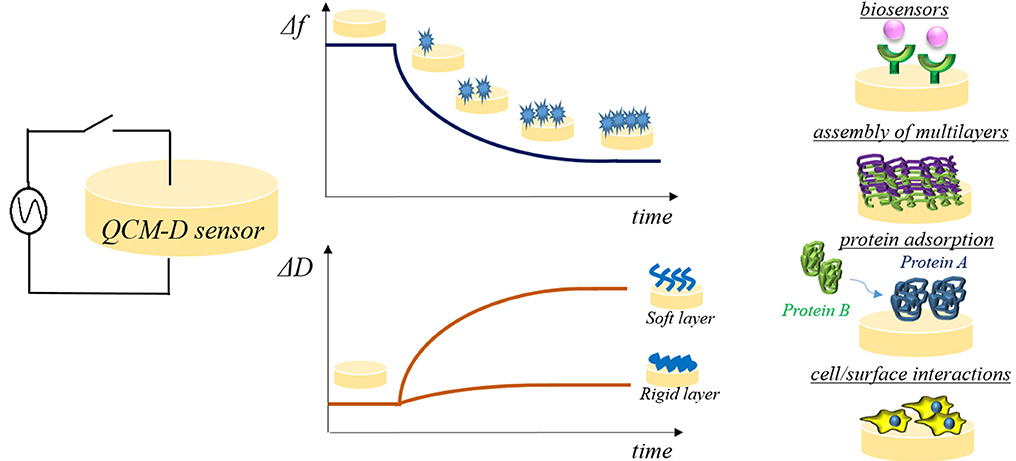In the early stage of drug development, the process of screening and characterizing compounds that interact with cellular and protein targets is essential. Creative Biostructure provides MagHelix™ Quartz Crystal Microbalance-Dissipation (QCM-D) solutions for drug discovery departments in the pharmaceutical industry and biotechnology companies to detect the activity of compounds on specific biological macromolecular targets or whole cells. QCM-D technology ensures that the detection process is carried out in a high speed, small sample quantities, real-time and economical way. Our QCM-D services detect the kinetics and magnitude of a cell, membrane, and protein drug targets response with respect to ligand binding, providing a wealth of information for effective drug screening.
QCM-D is a nanogram-sensitive technology that uses acoustic waves generated by oscillating the piezoelectric quartz plate to measure thin mass and monitor the decay of a crystal oscillation after rapid excitation with a frequency near to the resonant frequency to measure the viscoelasticity. The resonance is excited when sufficient AC voltage is applied at a frequency close to the resonant frequency of the quartz crystal. The dissipation factor is measured each time the drive generator output is stopped, and the sensor oscillation begins to decay exponentially. QCM-D has the ability to simultaneously detect changes in thin mass and viscoelastic property. And it offers kinetic information about the adsorption process and on the surface coverage of the resulting adsorbed layer.
 Figure 1. The schematic of QCM-D technology. (Tonda-Turo C.; et al. 2018)
Figure 1. The schematic of QCM-D technology. (Tonda-Turo C.; et al. 2018)
QCM-D technique can sense structural changes in whole cells or molecular layers on the sensor surface by its ability to probe changes in energy dissipation, making it potential in drug discovery, both in the screening of potential pharmaceutical candidates and improve the understanding of mechanisms of protein-ligand interactions.
Creative Biostructure supports the entire process of QCM-D assay development, experimental design, validation, and data analysis. We have many years of experience in the QCM-D project, and we also offer other biophysical techniques to solve the corresponding problems. If you are interested in our hit biophysical characterization solutions, please feel free to contact us.
References

Easy access to products and services you need from our library via powerful searching tools